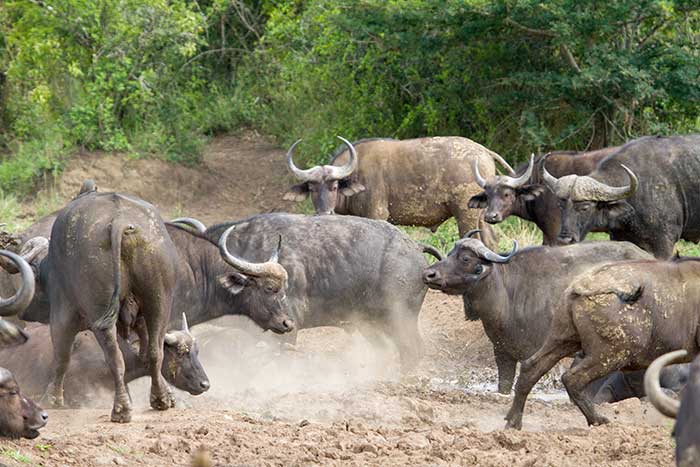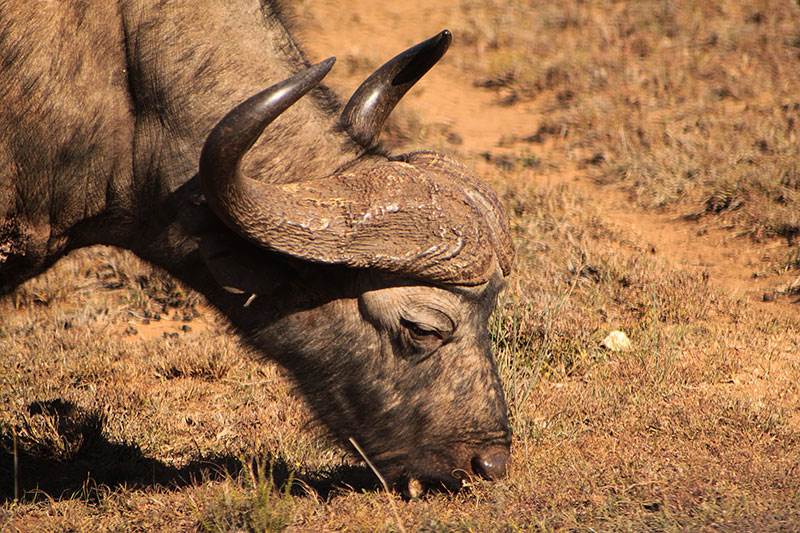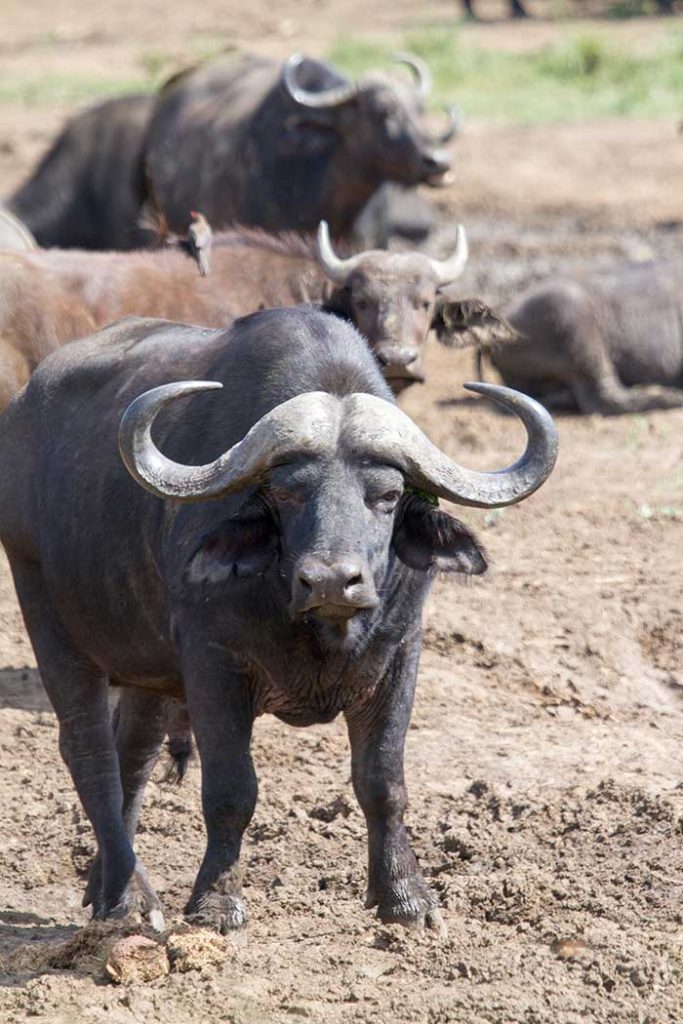Buffalo Facts & information

Buffalo Facts and information on the African or Cape buffalo (syncerus caffer); a member of the Big Five group of animals and one of the most dangerous of animals to hunt.
These powerfully built bovids can be found in dry savannah to floodplains, mixed forests and swamp areas of Africa. Despite their size, they can run at speeds of up to 57 kms/hr.



African Buffalo (synerus caffer)
General Description : large and powerful, ox like bovid.
Cattle like appearance with uniform dark brown or black colouring.
These powerfully built bovids can be found in dry savannah to floodplains, mixed forests and swamp areas of Africa. Despite their size, they can run at speeds of up to 57 kms/hr.
Buffalo Description
Buffalos are massive creatures weighing up to 800 kg with a shoulder height of 1.5 metres.
Their cattle-like appearance belies their power. Large and heavy horns curve down and outwards. then upwards and inward.
Both sexes have horns with the male developing a more gnarled “boss” as they grow older; this is difficult to penetrate even by a rifle bullet
Sight and hearing are both rather poor – but scent is well developed.
Although quiet for the most part – the animals do communicate. In mating season they grunt and emit hoarse bellows. A calf in danger will bellow mournfully bringing herd members running at a gallop to defend it
Distribution
in southern Africa the largest buffalo populations can be found in Kruger National Park, South Africa as well as Hwange and the Zambezi floodplains (Zimbabwe).
Buffalo Behaviour
Moving in large herds often over 400 strong and often following by lion.
Bachelor herds comprise of four to five individuals. Occasionally solitary ones live alone and do not associate with the larger breeding herds
Being a bulk grazer they are responsible for converting long grasslands into short grassy environments.
Did you know that buffalo are one of the only animals that purposefully circle back onto their own trail to “hunt” the pursuer?
Popular trophies for hunters , these large and often dangerous animals are unpredictable and can be deadly if cornered or wounded. No wonder ‘Dagga Boys’ are often called widow makers.
“Dagga Boys” is the name given to old Cape buffalo who have been kicked out of the herd.
Meaning “mud” in the Zulu language, like most animals they roll in the mud in an attempt to get rid of parasites
During the dry season they are the preferred prey of lion. If attacked the adults form a circle around the young and face outward.
Thus predators do not have a major impact on buffalo herds. Generally it is the old solitary-living males called ‘Dagga Boys’ that are most likely to be taken by lions.
By lowering their heads and presenting a solid barrier of sharp horns, it is difficult for predators to seize a calf. This effective group defense even allows blind and crippled members of the herd to survive.
